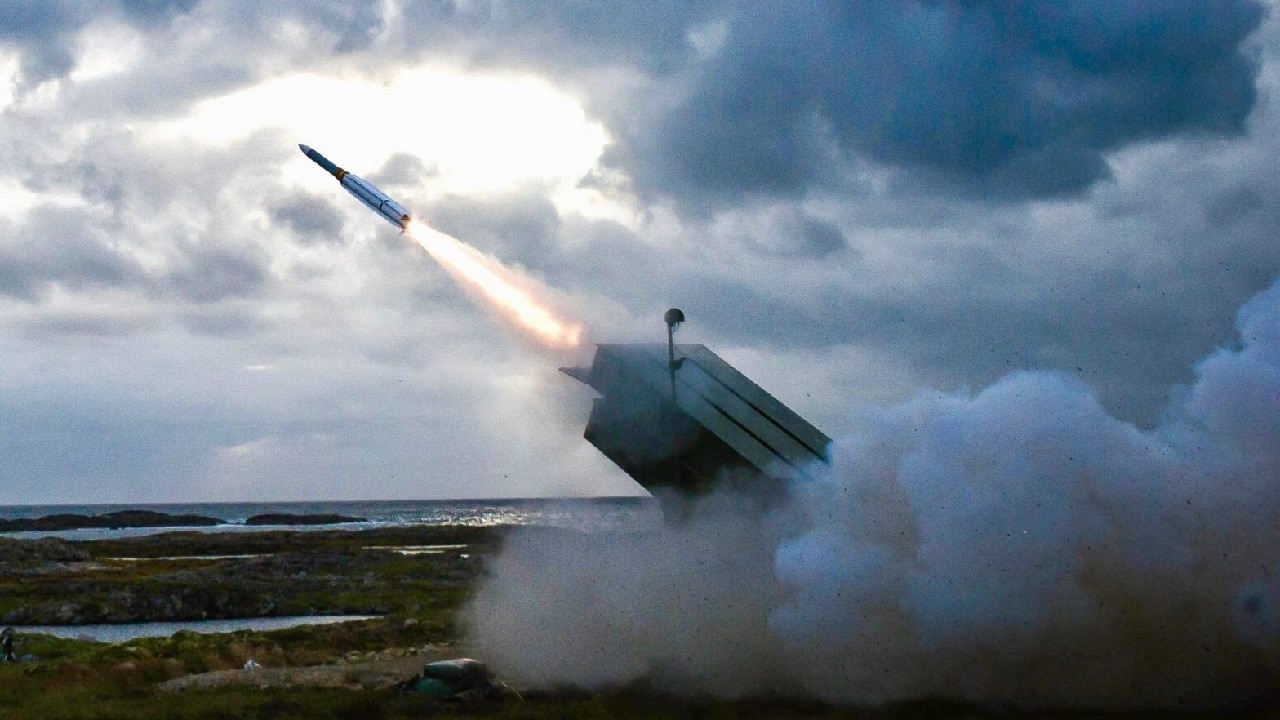Ukraine Gets its NASAMS: How Will Ukraine Make Use of Them? – As part of a U.S. military aid package to Ukraine to help the country defend itself from Russia’s February 2022 invasion, Ukraine will receive two National Advanced Surface-to-Air Missile Systems (NASAMS). The package, which was announced on July 1, also includes ammunition for Ukraine’s HIMARS multiple rocket launchers, 155mm artillery ammunition, and counter-artillery radars alongside hundreds of millions of dollars in additional Ukraine Security Assistance Initiative funds. However, the delivery of the NASAMS to Ukraine marks the most advanced delivery of air defense weaponry to Ukraine thus far in the war.
What is a NASAMS?
The NASAMS is one of the most advanced air defense systems developed in the West to date, and is capable of taking on airborne targets ranging from fixed-wing aircraft, rotary wing aircraft, cruise missiles, and unmanned aerial vehicles. Forming a critical element of air defenses surrounding the U.S. capital of Washington, D.C., the NASAMS was developed jointly by the American Raytheon Technologies Corporation and Norway’s Kongsberg Gruppen. The system is made up of three constituent parts: the AN/MPQ-64 Sentinel radar, Advanced Medium Range Air-to-Air Missile (AMRAAM), and the Kongsberg-developed Fire Distribution Center.
Capable of striking targets at a maximum range of almost 20 miles and an altitude of almost 70,000 feet, the NASAMS is solidly considered a medium-range range system, which gives it the ability to attack aircraft outside of visual range. While it is unclear which version of the NASAMS Ukraine will receive, it will certainly operate either the upgraded NASAMS-2 or NASAMS-3 variants. By purchasing the two announced NASAMS for Ukraine, the US hopes to provide Ukraine with the ability to better improve its ability to protect population centers and strategic points from Russian attacks. To date, the system has been integrated into the air defense systems in full by twelve countries in Europe, the Middle East, Oceania, and East Asia.
How will the NASAMS Fit into Ukraine’s Air Defense System?
The U.S. decision to send Ukraine NASAMS was first reported on June 26 by CNN reporter Natasha Bertrand. Ukrainian President Volodymyr Zelensky had personally requested that Western countries provide Kyiv with the air defense systems it requires to fight off Russian air strikes on its territory and armed forces, including recently by videoconference at the 2022 G7 summit in Bavaria. As noted in an interview with the semi-famous Ukrainian Air Force pilot operating under the callsign “Juice,” NASAMS would also be very helpful in at least partially blunting Russia’s overmatch in advantage in the air for Ukrainian pilots.
On the eve of Russia’s invasion, Ukraine’s air defense system was entirely made up of Soviet legacy equipment such as variants of the S-300, 2K12 Kub, 9K37M Buk M-1 and 9K330 Tor, a mixture which includes systems intended for a variety of ranges and targets. While many of these are rather outdated systems, Ukraine has mostly succeeded in conserving the strength and combat effectiveness of its air defense systems, even raising questions about the role of Western air forces relative to their air defense counterparts. Since the beginning of the war, Ukraine has received more than 1,400 examples of the Stinger anti-aircraft system from the United States, Slovakia’s remaining arsenal of S-300 systems, and the UK’s Starstreak missile system.
Even though Russia’s bombers have increasingly tried to steer clear of Ukrainian airspace when firing their cruise missiles at targets in Ukraine, NASAMS in Ukrainian hands could prove effective in further discouraging Russian bomber raids, and could help interdict those same cruise missiles, even if their origin bombers will continue to linger out of range. The value of such a defense mechanism is underscored by Russia’s fatal strike on a shopping mall in the Ukrainian city of Kremenchuk, which was conducted with an anti-ship cruise missile serving in a ground attack function.
While Ukraine is still weeks or months away from functionally receiving the NASAMS – since the systems need to be delivered and Ukrainian crews need to be trained on the complex system – it will be important to observe the actual effect Ukraine’s NASAMS have on the battlefield. Most likely, they will help fill gaps in Ukraine’s existing air defense architecture, protecting targets that otherwise may be less protected.
Wesley Culp is a Research Fellow at the Center for the Study of the Presidency and Congress. He regularly writes on Russian and Eurasian leadership and national security topics and has been published in The Hill as well as in the Diplomatic Courier. He can be found on Twitter @WesleyJCulp.

